Up and on the road again today and this will be our last day in Victoria. We travelled as far as Hamilton and stayed at the Lake Hamilton Motor Village & Caravan Park. It is not a very big caravan park. They have more cabins than powered sites, but we were happy with our two bays. The Grange Burn River runs along the side of the caravan park and there was no fence between us and this small river that flows through the town of Hamilton. There was a large grassed area just through the trees, which I presume was just beyond the boundary of the park. We took advantage of this lovely area to relax and enjoy the sunshine, later in the afternoon.
We did have one stop on our way to Hamilton and that was at Skipton for morning tea. It was Saturday market day in Skipton and we parked in the centre of town, where a couple from Ballarat had brought their 'so called treasures' and laid them out on a number of tables. We did actually purchase a couple of CD's for a change of music in the caravan and Peter purchased a few new books. He has read lots on this trip and has even picked up a few from the laundries in the caravan parks.
There is a story for Skipton.....In looking down from the caravan to the main street and the market stall, it was the bust below that caught my attention.
Sir Henry Bolte was born in Ballarat, but he spent most of the 26 years of his life living in Skipton. In 1913 he started his Primary schooling in the town. He completed Years 8 & 9 and received a scholarship to attend Ballarat Grammar, where he boarded for 2 years. Whilst there where he played the sport he loved. Henry said "He was fanatical on just about anything during his education, except study". At 16 he left school and returned home to rouseabout and work in the family business. His parents owned the local Hotel and the store next door. It is said Henry had been smitten with Skipton local Edith Elder (Jill) since he was a school boy and they married in 1934. They bid farewell to Skipton and began their married life at a property named 'Kialla' near Bamganie, which is about halfway between Skipton and Geelong. Over their years together, they battled the rabbits and weeds to create the farm they loved.
On his wedding day his mother asked Henry what he might do and he replied "That he might go into politics". 10 years later his political career began and he never looked back and with Jill at his side they were a formidable team. After serving in the army in WWII, he entered politics winning the seat of Hampden in November 1947. A seat he held until August 1972. Sir Henry became leader of the Victorian Liberal Party in 1953 and was elected Premier in 1955. During a period of industrial development and prosperity, he was known for his forthright style of leadership. He was the 30th and longest serving Premier of the State of Victoria, elected on the 9th June 1955 and serving until 23rd August 1972. Sir Henry retired at age 64, to the family farm, always maintaining a strong interest in the progress of his 'sovereign state of Victoria'. The final words on the plague are; His ashes are in the Skipton Cemetery together with those of the love of his life, Jill. A wonderful member of the Skipton Community - a true blue Aussie who pulled no punches.
It was a statue of Sir Henry Bolte that was outside the Gold Museum at Ballarat and it very much caught our attention with the bottle of whiskey and packet of cigarettes beside him. On one side of the statue was information similar to that in Skipton, but on the other side was the following; Sir Henry Bolte was probably the last 'Australian' battler - a larrikin, sportsman, lifelong gambler and smoker, who spoke in the idiom of a bygone pre-television age, who told things as he saw them, and whose tough earthy humour and quotable quotes still spring readily to mind'. Words from Peter Blazey 1990.
On the bottom of the plaque is written "I mightn't always have been right - but I've always been firm" (Sir Henry Bolt GCMG)
Just before we got to Hamilton we came across a great number of cars with stickers across their windscreen, logos etc. After a number of camera clicks, enabling me to zoom in and attempt to identify what the drive was for, we found it was the Neil Daniher Drive for MND. We had seen the promotion on television a few days earlier. 100 cars were driving from Adelaide to Melbourne to raise funds for MND research....'The Tour for a Cure'. It is an annual event and with the help of the web I have found the winning team raised $96,000 and the drive raised $2.5 million. It was the most successful Daniher's Drive ever.
Lake Hamilton is one of the Southern Grampians Shire's greatest assets. It was created in 1977 by the forming of a clay embankment across the Grange Burn River. The Lake receives water from the agricultural land upstream of Hamilton and storm-water drains which run from the streets of Hamilton directly into the Lake. Water flows over a spillway back into the Grange Burn River, which then flows into the Wannon River north west of the town.
Hamilton used to claim to be the "Wool Capital of the World", based on its strong historical links to sheep grazing which continue today. The town uses the tagline 'Greater Hamilton: one place, many possibilities'. The town has 'The BIG Wool Bales' and they were built in Hamilton in 1989. The bales are 10 metres long and 7 metres wide and there are five of them. When they were first built there were local shearers giving hands-on demonstrations of their shearing technique, there were wool displays and there was a cafe serving light meals. Due to a decline in business the 'Aussie Icon' closed in 2013, but many people still call in, just like us for the photo shoot! The 'Big Wool Bales' only get 5/10 on the Iconmetre. And now I am going to say that we have visited all seven of 'Victoria's Big Aussie Icons'. In 2014 we drove around and around at Bass trying to find the 'Big Worm'. If only I was as competent with my mobile phone then, as I am now! I do use the word 'competent' with tongue in cheek, but I am far more competent now, than I was four years ago! What I'm saying is "That if we went back to Bass now, I would find it"! So I have saved an image from the net of the 'Big Worm'.
Today Hamilton has a population of approximately 10,000. The Henty brothers were the first to settle Hamilton when they moved their stock inland from Portland in 1837. Major Thomas Mitchell had explored the area and reported favourably. Victoria's first pastoral settlement opened in 1844, named 'Grange Burn'. It became Hamilton 10 years later, when a Post Office opened on the 1st January 1854. Today sheep grazing and agriculture are the primary industries in the surrounding shire and the area produces as much as 15% of Australia’s total wool clip. The promotion book for the town says that up to 50,000 lambs are yarded for sale each Wednesday at the Hamilton Regional Livestock Exchange.
The Wannon and Nigretta Falls are tourist attractions in the area. We did visit both on Saturday afternoon, but they were not spectacular like the promotional photos have them. Hamilton has an average rainfall of 835 mm, which is 28 inches in our old rainfall language. We do convert back to the old inches from time to time! The Wannon Falls is a 'punchbowl waterfall' and is fed by the Wannon River, which forms in the Grampian Mountains nearby. The southern tip of the Grampians was clearly visible and quite lovely as we drove through Dunkeld, 28 kilometres from Hamilton. The 'Wannon Falls' drop 30 metres to a large plunge pool.
Peter and I did visit Hamilton in 2008, when we had a trip with Danny and Marie Williamson through this region of Victoria. We were on our way to Nhill for Rodney & Jasmyn Allen's wedding. We stayed at Halls Gap in the Grampians for a couple of nights and came south to Hamilton for a trip one afternoon. Whilst here we visited the Ansett Museum, so because I wasn't into recording the 'Story' back then, I decided on another visit. J & D came with me, but Peter went back to the van as we have trouble with a connection for the indicator lights of the van. We had managed to get to Hamilton in time for him to organise the purchase of a fitting, so he was keen to get working on that.
Sir Reginald Ansett and his transport empire still holds enormous significance for Australian aviation. Always an innovator Reg Ansett developed many new ideas and firsts in Australian commercial aviation. The story of Reg Ansett and Hamilton is........
On the morning of the 7th December 1931, young Reginald Ansett drove a Studebaker car from Hamilton to Ballarat with a passenger. Reg had been working in the Northern Territory and he had come to Hamilton with just 50 pounds to his name. He purchased the Studebaker and the Ansett empire was born. Ansett Airways Pty Ltd commenced operation in 1935. This was an offshoot of his road transport business. Road transport businesses were becoming so successful, they were threatening the freight and passenger revenue of Victorian Railways. This led the state government to legislate to put private road transport operators out of business. Reg Ansett countered by establishing the airline. Aviation was under control of the national government and beyond the reach of the state government. Ansetts's first airline route was between Hamilton and Melbourne. Reg operated the service with a Fokker Universal monoplane. To purchase the Fokker, Reg flew his moth aircraft to Sydney, navigating with a road map.
The enormous success of the airline, led Ansett to float the business in 1937. As the route network expanded, Ansett Airways imported Lockheed Electra aircraft. During WWII, Reg Ansett opted to suspend all scheduled services in favour of more lucrative work for the USAAF. After the war Ansett battled to re-establish his domestic routes using war-surplus Douglas DC-3's, converted from C-47's and a motley collection of smaller airliners.
At this time, the Australian domestic airline travel sector was dominated by Australian National Airways (ANA), established in 1936 by a consortium of British financed Australian shipowners. The Chifley Labor Government was determined to establish a state-owned airline to operate all domestic and international services. It was eventually thwarted in this aim by the High Court of Australia, and so it established the Trans Australia (TAA) to operate in competition with ANA. The DVD we viewed made us aware that Reg Ansett did have a win though, and ensured his first jet aircraft landed in Australia, before the first TAA jet did.
The Museum is located in the original Ansett hangar and has a Fokker Universal aircraft, similar to the one which Reg Ansett first opened up services between Melbourne and Hamilton. The original Fokker burnt in a Hangar fire in 1939. Ansett operated for 66 years and 11 days after its first take off from Hamilton. There are 82 Ansett model aircraft displayed at the Museum, which were formerly on display at the Ansett office on Swanston Street in Melbourne. The Museum has a complete set of Ansett and Ansett-ANA Flight Attendant uniforms. There is also a restored 1928 Studebaker car complete with a box of oranges. During the viewing of the DVD, we learnt of how Reg got over one of the hurdles thrown at him by the State Government. He worked out if he carried fruit with his passengers, he was not breaking the newly implemented laws!
Sir Reginald Ansett quote; "I don't think I'm anything out of the box. I just think if you work hard enough and long enough, you'll get somewhere".
It was a short visit to Hamilton and an enjoyable one.

 Hamilton, Victoria, Australia
Hamilton, Victoria, Australia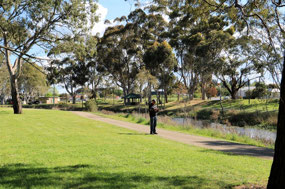
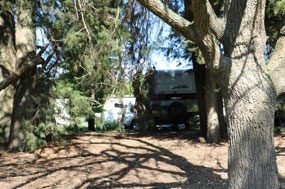
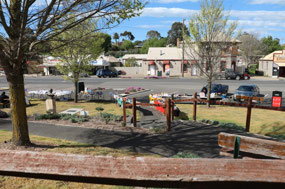
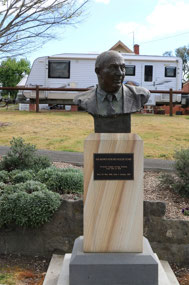

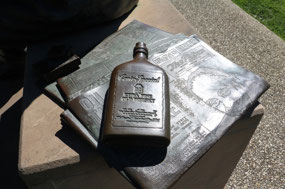
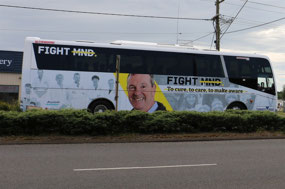
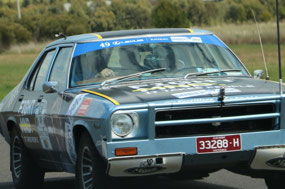
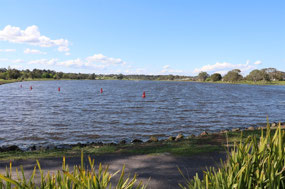
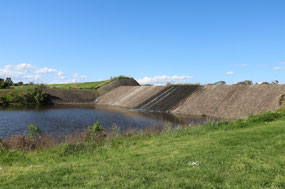
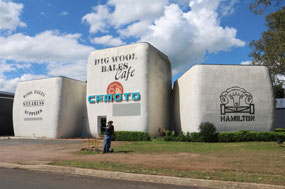
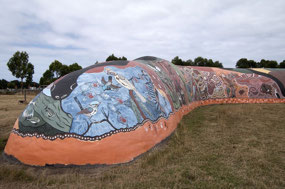
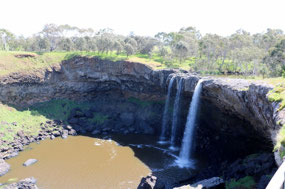
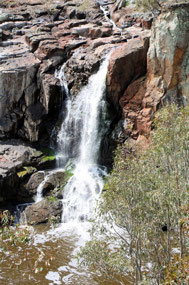
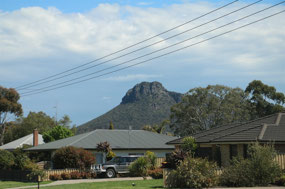
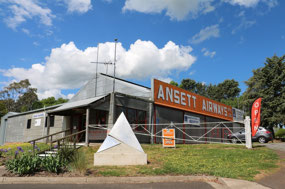
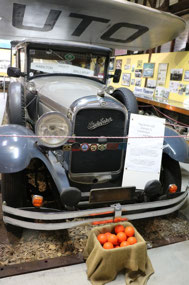
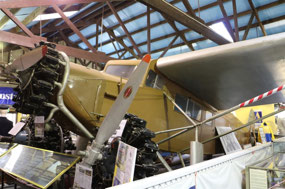
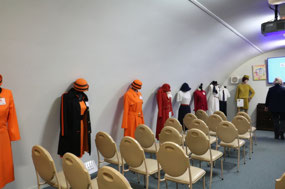
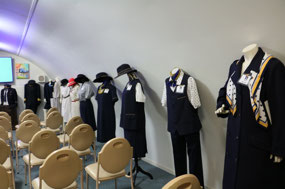
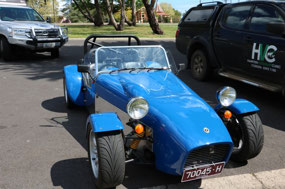
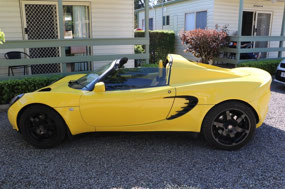

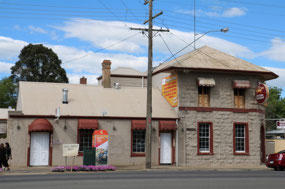
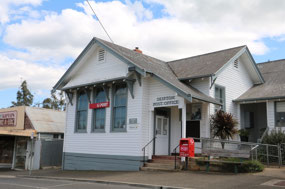
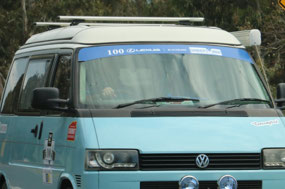
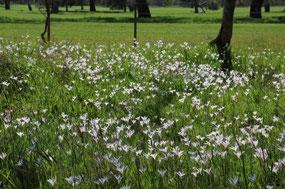
Jenny
2018-10-17
I often wonder about all these statues and busts around the place. Besides the 101 prime minister's, how many new busts are there as there probably isn't anymore pioneering to do?
pamandpete
2018-10-18
Exactly! But then one does take notice. So many'Big Statues' that tell the stories. All the 'Anzac Memorials' are now telling the story. And those 'Big Aussie Icons' have provided us with a reason to travel different roads.
Jenny
2018-10-18
I'd like to follow the Big Aussie Icons on our trips. Will have to remember to look them up before we take off and the Anzac Memorials will also be something to watch out for without the need to visit too many museums, especially the car ones!